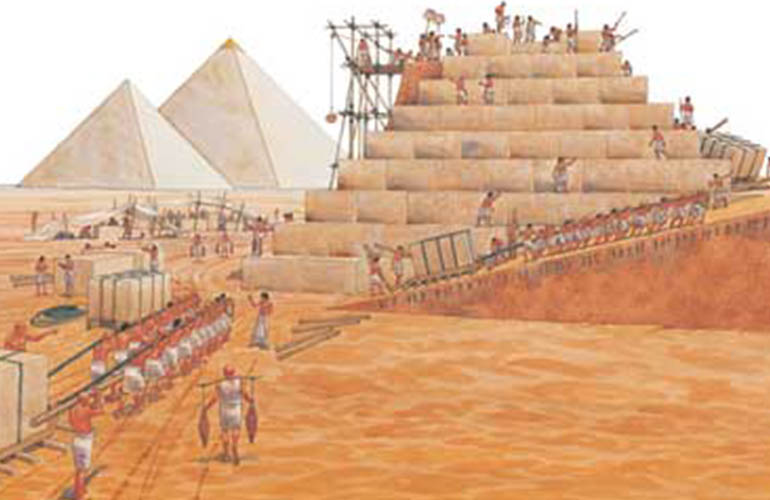Many ancient egypt pyramids were built as tombs for pharaohs and their families

Many Ancient Egypt Pyramids Were Built as Tombs for Pharaohs and Their Families

The ancient Egyptians left behind an architectural marvel that continues to captivate the world to this day - the pyramids. These magnificent structures, with their towering presence and mysterious allure, have fascinated researchers, historians, and tourists alike. Among their many purposes, the primary reason behind the construction of these pyramids was to serve as tombs for the pharaohs and their families, showcasing the grandeur of ancient Egyptian burial practices and their fervent belief in the afterlife.
Ancient Egypt, with its rich history and deep-rooted traditions, developed a complex system of burial rituals and practices. The pharaohs, as the divine rulers of Egypt, were honored and revered both during their lifetime and after death. It was believed that when a pharaoh passed away, they would ascend to the heavens and join the gods. Hence, the tombs were constructed to ensure their safe journey to the afterlife and facilitate their divine transformation.

The most famous pyramid of all, the Great Pyramid of Giza, was built during the 4th Dynasty for Pharaoh Khufu. Standing at a staggering height of 481 feet (146 meters), it was the tallest man-made structure in the world for over 3,800 years. Surrounding the pyramids were vast necropolises and temple complexes, showcasing the resources and manpower dedicated to honoring the pharaohs.
The pyramids were not just solitary structures; they were part of a larger complex. These complexes included temples, causeways, and smaller pyramids for the pharaoh’s family members, ensuring that they too would be able to join their loved ones in the afterlife. The design and layout of the pyramids were intended to serve as a symbolic representation of the pharaoh’s ascension to the heavens, with the pyramid’s apex touching the sky.
To construct these colossal structures, ancient Egyptians utilized an incredible level of precision and engineering techniques. They meticulously shaped and stacked massive limestone blocks, each weighing several tons, to create these architectural wonders. The construction process involved extensive planning, manual labor, and the mobilization of thousands of workers over extended periods.
Despite the countless theories and speculations surrounding the construction techniques employed, many details remain a mystery. However, the fact remains that the ancient Egyptians were able to erect these awe-inspiring pyramids with remarkable precision and skill, paying homage to their pharaohs for eternity.
The pyramids serve as a testament to the advanced civilization of ancient Egypt, their cultural significance, and their belief in the afterlife. These monumental tombs, with their enduring beauty and enigmatic nature, continue to bewilder and captivate people from all corners of the globe. Embark on a journey to explore the wonders of the ancient world and immerse yourself in the magic of Egypt’s pyramids.
For more information about the construction techniques and mysteries surrounding the pyramids, please visit this source.
Tags
Share
Related Posts
Quick Links
Legal Stuff

